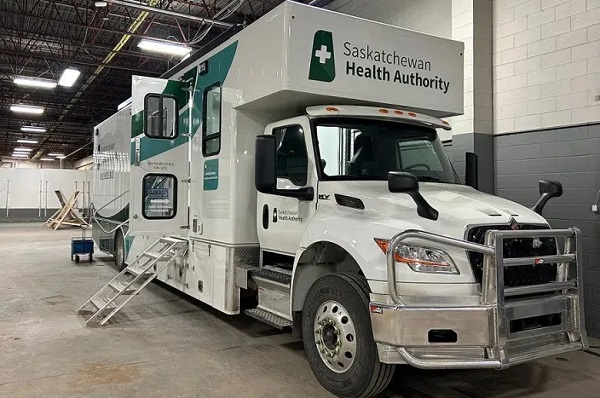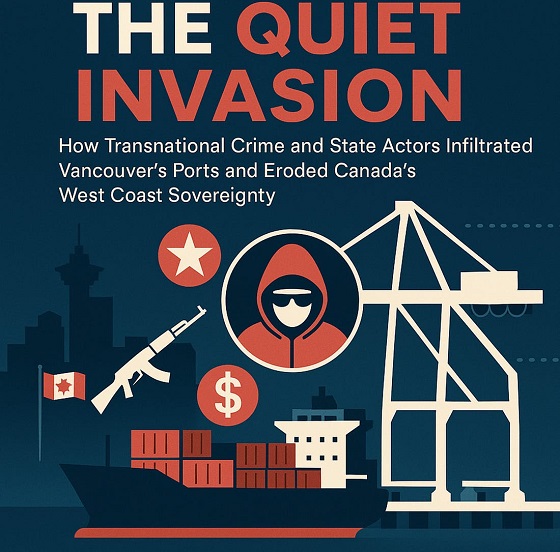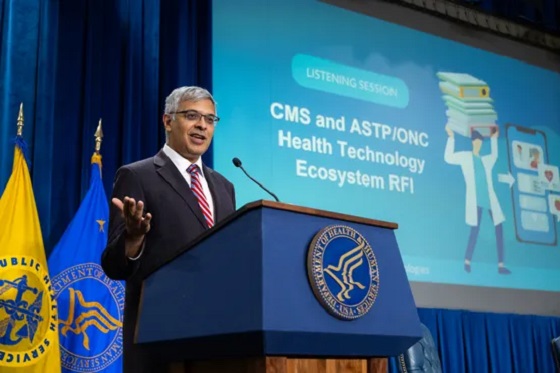Addictions
The Fentanyl Crisis Is A War, And Canada Is On The Wrong Side

From the Frontier Centre for Public Policy
Drug cartels, China, and Canada’s negligence are fueling the deadliest epidemic of our time
It took the threat of U.S. tariffs for Canada to wake up to the horrors of the fentanyl epidemic that is destroying young lives and shattering families. Canadians, who panicked over COVID-19 deaths, have hardly noticed that far more healthy Canadians and Americans are now dying from fentanyl overdoses than ever died from COVID.
Yet while Americans confront this deadly epidemic, Canada remains oblivious to how deeply the crisis has infiltrated our borders.
A grim milestone came in 2021 when U.S. opioid overdose deaths exceeded 100,000 in a single year. More than a million Americans have died from opioid overdoses since these highly addictive drugs first entered the market. Today, fentanyl overdose is the leading cause of death for Americans aged 18 to 25.
Behind every kilogram of fentanyl lies half a million potential deaths. Behind every pill—a game of Russian roulette.
Fentanyl is a synthetic opioid so powerful that one kilogram can kill 500,000 people. Its extreme potency makes it both highly dangerous and easy to smuggle. A single backpack thrown across the border can carry $1 million worth of the drug. It is easy to see why so many opportunists are willing to risk their lives producing and selling it. Overdose statistics fail to capture the bodies found in deserts or those murdered in the vicious drug trade.
Fentanyl is produced for a few cents per pill but sold on the street for many times that, making it both profitable and a cheap high. Incredibly addictive, it is found in virtually all street drugs, giving “the most bang for the buck.” Made by amateurs, these drugs are carelessly laced with lethal doses. And because the pills look identical, users never know whether a dose will get them high—or kill them.
But Canada is not just a bystander in this crisis. A loophole in our border laws—the “de minimis” exemption—has turned Canada into a gateway for fentanyl entering U.S. communities. This exemption allows exporters to ship small packages valued at less than $800 directly to customers with minimal border inspection. Chinese exporters exploit this loophole to ship fentanyl precursors into Canada, where they are processed into pills or moved to Mexico under the supervision of Mexican drug cartels.
The Trump administration has pressed Canada to close this loophole. That it has existed for years, almost unnoticed, should shock us to the core.
The problem of fentanyl production within Canada should not be minimized. The RCMP reports that fentanyl labs are appearing across B.C., often producing methamphetamine alongside fentanyl. These small labs supply both domestic and international markets. The threat is real, and it is growing.
Exactly how many Canadians have died from fentanyl overdoses is unclear. However, with Canada’s population roughly one-ninth of the U.S., it is reasonable to estimate that Canadian deaths are approximately one-ninth of U.S. numbers.
But overdose numbers alone don’t tell the whole story. The number of lives wrecked by this drug is staggering. Parents watch their children—once vibrant and full of promise—disappear before their eyes. Their beauty fades, their minds unravel, and their lives collapse into the desperate cycle of chasing the next fix. Some escape. Many don’t. Until death takes them, that is.
The new Trump administration has promised to confront this carnage. “This is a drug war,” Peter Navarro, assistant to the president and director of the Office of Trade and Manufacturing Policy, recently told reporters. “The Mexican cartels have expanded up to Canada, making fentanyl there and sending it down to the U.S. The Chinese are using Canada to send in small parcels below the radar. It’s important that Canadians understand we are trying to stop the killing of Americans by these deadly drugs.”
But while the U.S. acts, Canada hesitates. Trump is addressing the problem—Canada is enabling it.
The Trump administration also views Canada’s lax drug laws and casual attitude toward buying and selling even the most dangerous drugs as an exacerbating factor. However, on the fentanyl issue, it is clear Trump is determined to tackle a problem Canada has largely ignored. He should be commended for this, and Canada should start cleaning up its own mess.
Yet fentanyl smuggling from Canada is only part of a larger issue. Behind the drug trade lies an even more insidious enemy: the Chinese Communist Party (CCP).
The importation of fentanyl precursors from China, facilitated by Mexican cartels, has turned Vancouver into a money-laundering hub for the CCP. Investigative reporters like Sam Cooper and Terry Glavin have revealed the depth of this corruption, despite the Hogue Commission’s failure to expose it fully.
Ryan P. Williams, president of the Claremont Institute, warns that “The fentanyl crisis is part of a larger campaign by the CCP to destabilize Western nations. They flood our streets with poison while corrupting our institutions from within. If Canada doesn’t confront this threat, it will lose not only lives—but its sovereignty.”
Our new “fentanyl czar,” appointed by Prime Minister Justin Trudeau, should not only address the drug crisis but also expose how deeply a hostile CCP has compromised Canada.
Tackling the fentanyl problem will be enormously difficult—likely impossible— for the Trump administration without cooperation from China, Mexico and even Canada. And forcing that cooperation is likely the first part of Trump’s plan.
Canada’s role may be small, but it must take full responsibility for securing its borders and confronting the fentanyl crisis. Trump has forced us to act. Now, if we are serious about restoring our nation’s integrity, we must break the CCP’s grip on our institutions.
In doing so, we will save Canadian lives.
Brian Giesbrecht is a retired Manitoba judge. He is a Senior Fellow at the Frontier Centre for Public Policy. He was recently named the ‘Western Standard Columnist of the Year.’
Addictions
New RCMP program steering opioid addicted towards treatment and recovery

News release from Alberta RCMP
Virtual Opioid Dependency Program serves vulnerable population in Red Deer
Since April 2024, your Alberta RCMP’s Community Safety and Well-being Branch (CSWB) has been piloting the Virtual Opioid Dependency Program (VODP) program in Red Deer to assist those facing opioid dependency with initial-stage intervention services. VODP is a collaboration with the Government of Alberta, Recovery Alberta, and the Alberta RCMP, and was created to help address opioid addiction across the province.
Red Deer’s VODP consists of two teams, each consisting of a police officer and a paramedic. These teams cover the communities of Red Deer, Innisfail, Blackfalds and Sylvan Lake. The goal of the program is to have frontline points of contact that can assist opioid users by getting them access to treatment, counselling, and life-saving medication.
The Alberta RCMP’s role in VODP:
- Conducting outreach in the community, on foot, by vehicle, and even UTV, and interacting with vulnerable persons and talking with them about treatment options and making VODP referrals.
- Attending calls for service in which opioid use may be a factor, such as drug poisonings, open drug use in public, social diversion calls, etc.
- Administering medication such as Suboxone and Sublocade to opioid users who are arrested and lodged in RCMP cells and voluntarily wish to participate in VODP; these medications help with withdrawal symptoms and are the primary method for treating opioid addiction. Individuals may be provided ongoing treatment while in police custody or incarceration.
- Collaborating with agencies in the treatment and addiction space to work together on client care. Red Deer’s VODP chairs a quarterly Vulnerable Populations Working Group meeting consisting of a number of local stakeholders who come together to address both client and community needs.
While accountability for criminal actions is necessary, the Alberta RCMP recognizes that opioid addiction is part of larger social and health issues that require long-term supports. Often people facing addictions are among offenders who land in a cycle of criminality. As first responders, our officers are frequently in contact with these individuals. We are ideally placed to help connect those individuals with the VODP. The Alberta RCMP helps those individuals who wish to participate in the VODP by ensuring that they have access to necessary resources and receive the medical care they need, even while they are in police custody.
Since its start, the Red Deer program has made nearly 2,500 referrals and touchpoints with individuals, discussing VODP participation and treatment options. Some successes of the program include:
- In October 2024, Red Deer VODP assessed a 35-year-old male who was arrested and in police custody. The individual was put in contact with medical care and was prescribed and administered Suboxone. The team members did not have any contact with the male again until April 2025 when the individual visited the detachment to thank the team for treating him with care and dignity while in cells, and for getting him access to treatment. The individual stated he had been sober since, saying the treatment saved his life.
- In May 2025, the VODP team worked with a 14-year-old female who was arrested on warrants and lodged in RCMP cells. She had run away from home and was located downtown using opioids. The team spoke to the girl about treatment, was referred to VODP, and was administered Sublocade to treat her addiction. During follow-up, the team received positive feedback from both the family and the attending care providers.
The VODP provides same-day medication starts, opioid treatment transition services, and ongoing opioid dependency care to people anywhere in Alberta who are living with opioid addiction. Visit vodp.ca to learn more.
“This collaboration between Alberta’s Government, Recovery Alberta and the RCMP is a powerful example of how partnerships between health and public safety can change lives. The Virtual Opioid Dependency Program can be the first step in a person’s journey to recovery,” says Alberta’s Minister of Mental Health and Addiction Rick Wilson. “By connecting people to treatment when and where they need it most, we are helping build more paths to recovery and to a healthier Alberta.”
“Part of the Alberta RCMP’s CSWB mandate is the enhancement of public safety through community partnerships,” says Supt. Holly Glassford, Detachment Commander of Red Deer RCMP. “Through VODP, we are committed to building upon community partnerships with social and health agencies, so that we can increase accessibility to supports in our city and reduce crime in Red Deer. Together we are creating a stronger, safer Alberta.”
Addictions
Saskatchewan launches small fleet of wellness buses to expand addictions care

By Alexandra Keeler
Across Canada, mobile health models are increasingly being used to offer care to rural and underserved communities
Saskatchewan has launched a small fleet of mobile wellness buses to improve access to primary health care, mental health and addiction services in the province.
The first bus began operating in Regina on Feb. 12. Another followed in Prince Albert on March 21. Saskatoon’s bus was unveiled publicly on April 9. All three are former coach buses that have been retrofitted to provide health care to communities facing barriers to access.
“Mobile health units are proven to improve outcomes for people facing barriers to healthcare,” Kayla DeMong, the executive director of addiction treatment centre Prairie Harm Reduction, told Canadian Affairs in an email.
“We fully support this innovative approach and are excited to work alongside the health bus teams to ensure the people we support receive the care they need, when and where they need it.”
Wellness buses
Like all provinces, Saskatchewan has been grappling with the opioid crisis.
In 2023, an estimated 457 individuals died from overdoses in the province. In 2024, that number fell to 346. But the province continues to struggle with fatal and non-fatal overdoses.
In late February, Saskatoon firefighters responded to more than 25 overdoses in a single 24-hour period. Just over a week later, they responded to 37 overdoses within another 24-hour window.
Saskatchewan’s wellness buses are part of the province’s plan to address these problems. In April 2025, the province announced $2.4 million to purchase and retrofit three coach buses, plus $1.5 million in annual operating funds.
The buses operate on fixed schedules at designated locations around each city. Each bus is staffed with a nurse practitioner, nurse and assessor coordinator who offer services such as overdose reversal kits, addiction medicine and mental health referrals.
“By bringing services directly to where people are, the health buses foster safer, more welcoming spaces and help build trusting relationships between community members and care providers,” said DeMong, executive director of Prairie Harm Reduction.
Saskatoon-based Prairie Harm Reduction is one of the local organizations that partners with the buses to provide additional support services. Prairie Harm Reduction provides a range of family, youth and community supports, and also houses the province’s only fixed supervised consumption site.
The mobile model
Saskatchewan is not the only province using wellness buses. Across Canada, mobile health models are increasingly being used to expand access to care in rural and underserved communities.
In Kingston, Ont., the Street Health Centre operates a retrofitted RV called PORCH (Portable Outreach Care Hub) that serves individuals struggling with homelessness and addiction.
“Our outreach services are extremely popular with our clients and community partners,” Donna Glasspoole, manager at Street Health Centre, said in an emailed statement.
“PORCH hits the road two to three days/week and offers a variety of services, which are dependent on the health care providers and community partners aboard.”
Street Health Centre also has a shuttle service that picks up clients in shelters and brings them to medical clinics or addiction medicine clinics.
The PORCH vehicles are not supported by provincial funding, but instead rely on support from the United Way and other grants. Glasspoole says the centre’s permanent location — which does receive government funding — is more cost-effective to operate.
“The vehicles are expensive to operate and our RV is not great in winter months and requires indoor parking,” she said.

Politically palatable
Many mobile health models currently do not provide controversial services such as supervised drug consumption.
The Saskatchewan Health Authority told Canadian Affairs the province’s new wellness buses will not offer supervised consumption services or safer supply, where drug users are given prescribed opioids as an alternative to toxic street drugs.
“There are no plans to provide supervised consumption services from the wellness buses,” Saskatchewan Health Authority spokesperson Courtney Markewich told Canadian Affairs in a phone call.
This limited scope may make mobile services more politically palatable in provinces that have resisted harm reduction measures.
In Ontario, some harm reduction programs have shifted to mobile models following Premier Doug Ford’s decision to suspend supervised consumption services located within 200 metres of schools and daycares.
In April, Toronto Public Health ended operations at its Victoria Street fixed consumption site, replacing it with street outreach and mobile vans.
The Ontario government’s decision to close the sites is part of a broader pivot away from harm reduction. The province is investing $378 million to transition suspended sites into 19 new “HART Hubs” that offer primary care, mental health, addictions treatment and other supports.
Glasspoole says that what matters most is not whether services are provided at fixed or mobile locations, but how care is delivered.
Models that “reduce barriers to care, [are] non-judgemental, and [are staffed by] trauma-informed providers” are what lead more people toward treatment and recovery, she said in her email.
In Saskatchewan, DeMong hopes the province’s new wellness buses help address persistent service gaps and build trust with underserved communities.
“This initiative is a vital step toward filling long-standing gaps in the continuum of care by providing low-barrier, community-based access to health-care services,” she said.
This article was produced through the Breaking Needles Fellowship Program, which provided a grant to Canadian Affairs, a digital media outlet, to fund journalism exploring addiction and crime in Canada. Articles produced through the Fellowship are co-published by Break The Needle and Canadian Affairs.
Subscribe to Break The Needle
-

 Business10 hours ago
Business10 hours agoRFK Jr. says Hep B vaccine is linked to 1,135% higher autism rate
-

 Alberta2 days ago
Alberta2 days agoAlberta Independence Seekers Take First Step: Citizen Initiative Application Approved, Notice of Initiative Petition Issued
-

 Crime22 hours ago
Crime22 hours agoNational Health Care Fraud Takedown Results in 324 Defendants Charged in Connection with Over $14.6 Billion in Alleged Fraud
-

 Crime2 days ago
Crime2 days agoSuspected ambush leaves two firefighters dead in Idaho
-

 Alberta2 days ago
Alberta2 days agoWhy the West’s separatists could be just as big a threat as Quebec’s
-

 Health22 hours ago
Health22 hours agoRFK Jr. Unloads Disturbing Vaccine Secrets on Tucker—And Surprises Everyone on Trump
-

 Business2 days ago
Business2 days agoCanada Caves: Carney ditches digital services tax after criticism from Trump
-

 Business2 days ago
Business2 days agoMassive government child-care plan wreaking havoc across Ontario


